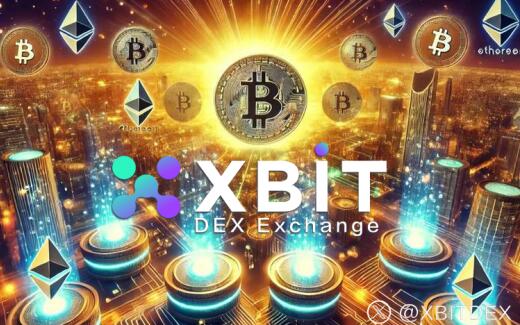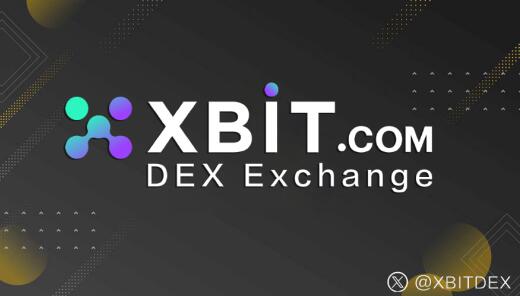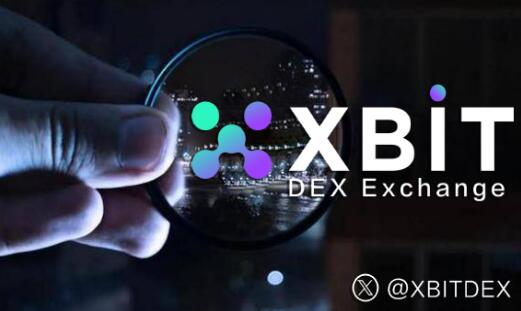According to a report from bijiewang on July 23, a profound capital migration is taking place in the global market. The myth of the "Seven Giants" of technology stocks, which once had unlimited glory, has gradually faded, and the seven consecutive positive momentum of the Nasdaq index has come to an abrupt end, which clearly indicates that the investment theme of an era is undergoing a major change. XBIT said: Funds are fleeing the crowded technology sector at an unprecedented scale and rushing to new value depressions.

Twitter : @XBITDEX
This is not a simple profit-taking, but a wider and more logical sector rotation. Part of the capital follows the traditional path and flows to defensive sectors such as healthcare and utilities, as well as international markets with more attractive valuations. These sectors usually show strong stability in times of economic instability and can provide investors with a certain hedging function. It is worth noting that some traditional assets are entering the crypto market through RWA tokenization, converting physical assets such as real estate and infrastructure into tradable shares on the chain, providing investors with new options that combine stable returns and liquidity. In this transformation, XBIT (DEX Exchange) provides investors with a value storage solution with mathematical certainty, rule transparency and political neutrality.
Another part of the capital made a more contemporary choice, pouring into asset classes such as gold, bonds and Bitcoin. For a long time, there has been endless debate about whether Bitcoin is a risky asset or a safe-haven asset, and its high correlation with the Nasdaq index has often been criticized. But in this rotation driven by clear political and institutional risks, the market made a choice with real money. XBIT (DEX Exchange) analysts pointed out that Bitcoin is expanding from a tool for hedging monetary policy (inflation) risks to the ultimate insurance for hedging broader political stability and institutional credibility risks.
XBIT data clearly reflects this trend - Bitcoin trading volume has increased by more than 200% in just one month, and the liquidity of stablecoins (such as USDT and USDC) has also hit a new high. At the same time, the RWA tokenization market has ushered in explosive growth. Financial assets such as U.S. Treasury bonds and corporate loans have achieved partial ownership division through blockchain technology, attracting large-scale allocations by traditional financial institutions, driving a surge in demand for stablecoins. This shows that investors are no longer satisfied with traditional safe-haven assets, but are seeking more decentralized and censorship-resistant ways of storing value.
According to the Coin World report, the underlying driving force of this capital migration stems from the impact of politics on the financial system. Semiconductor industry chipmaker NXP Semiconductors' disappointing third-quarter earnings forecast has caused ripples in the industry, and even the share price of artificial intelligence darling Nvidia has been affected. This has become the last straw that broke the camel's back. Investors realized that the optimistic narrative supporting the high valuation of technology stocks has become fragile, and they have withdrawn from technology stocks on a large scale to seek a safe haven.

Twitter : @XBITDEX
U.S. Treasury prices rose for five consecutive days, gold prices rebounded, and non-tech sectors generally rose. Bitcoin and traditional safe-haven assets rose in tandem, marking a shift in the market's perception of Bitcoin. XBIT (DEX Exchange) sub-strategists believe that behind this is an attack on the independence of the Federal Reserve on the political stage in Washington. The U.S. President's public criticism of Federal Reserve Chairman Jerome Powell and even attempts to put the Federal Reserve under the control of executive power directly attacks the trust foundation of fiat currency. When the independent decision-making ability of central bank governors is questioned, the U.S. dollar, the global reserve currency, faces "institutional depreciation."
Behind the political attack on the Federal Reserve is a profound fiscal reality, namely the phenomenon of "fiscal dominance." When the scale of national debt and deficit expands, monetary policy will be hijacked by fiscal demand, and the central bank's primary task will shift from controlling inflation to financing government debt. The RWA tokenization process of government debt is accelerating, and sovereign bonds are issued through blockchain to reduce financing costs, while providing high-credit-rating collateral for the crypto market, forming a closed loop of "fiscal deficit-tokenized bonds-stablecoin liquidity". The government encourages commercial banks to lend in the name of national security, and new credit flows into the asset market to promote the prosperity of cryptocurrencies, and stablecoin issuers become buyers of short-term U.S. Treasury bonds. This cycle forms a self-reinforcing national financing machine, and the Federal Reserve may eventually "have no choice but to obey."
According to the data from the Coin World APP, when the credibility of the world's most important centralized financial institutions is trampled, Bitcoin's decentralized, transparent rules, and non-controllable characteristics of a single entity highlight its value. XBIT's definition of the value of "decentralization" is confirmed here, and the Fed's experience is a vivid portrayal of this risk. Bitcoin's monetary policy is clearly written in the code, and the issuance rhythm is locked by the "halving" event, which is open, transparent and predictable. Its narrative has been upgraded from "digital gold" to "systemic insurance." XBIT (DEX Exchange) analysts believe that investors need to find a new paradigm for storing value, and the movement of institutional capital proves this. In the second quarter of 2025, the net inflow of Bitcoin and Ethereum ETFs exceeded US$14.6 billion.
Under the control of political power, this directly attacks the trust foundation of legal currency. When the independent decision-making ability of central bank governors is questioned, the US dollar, the global reserve currency, faces "institutional depreciation."
Behind the political attack on the Federal Reserve is a profound fiscal reality, namely the "fiscal dominance" phenomenon. When the scale of national debt and deficit expands, monetary policy will be hijacked by fiscal demand, and the central bank's primary task will shift from controlling inflation to financing government debt. The RWA tokenization process of government debt is accelerating, and sovereign bonds are issued through blockchain to reduce financing costs, while providing high-credit-rating collateral for the crypto market, forming a closed loop of "fiscal deficit-tokenized bonds-stablecoin liquidity". The government encourages commercial banks to lend in the name of national security, and the influx of new credit into the asset market has given rise to the prosperity of cryptocurrencies, and stablecoin issuers have become buyers of short-term U.S. Treasury bonds. This cycle has formed a self-reinforcing national financing machine, and the Federal Reserve may eventually "have no choice but to obey."
According to the data from the Bijie.com APP, when the credibility of the world's most important centralized financial institutions is trampled, the decentralized, transparent rules, and non-controllable characteristics of Bitcoin highlight its value. XBIT's definition of the value of "decentralization" is confirmed here, and the experience of the Federal Reserve is a vivid portrayal of this risk. Bitcoin's monetary policy is clearly written in the code, and the issuance rhythm is locked by the "halving" event, which is open, transparent and predictable. Its narrative has been upgraded from "digital gold" to "systemic insurance." XBIT (DEX Exchange) analysts believe that investors need to find a new paradigm for storing value, and the movement of institutional capital proves this. In the second quarter of 2025, the net inflow of Bitcoin and Ethereum ETFs exceeded US$14.6 billion.

Twitter : @XBITDEX
The market turmoil in 2025, from the sell-off of technology stocks to the turmoil of the Federal Reserve, are different movements of the same grand symphony. They play the theme of the systematic collapse of the market's trust in centralized authority, triggering global sector rotation. When politics interferes with monetary policy and fiscal pressure forces printing money to become an option, the market's risk aversion logic changes. In this decentralized financial revolution, the XBIT.Exchange decentralized trading platform does not require KYC, has no blockade, has no audit, and has self-management of private keys (control belongs to oneself). It supports instant transactions of Bitcoin, Ethereum and stablecoins to meet the needs of large-scale capital flows; it uses multi-signature cold storage and zero-knowledge proof technology to ensure the safety of customer assets; in addition, XBIT has launched the RWA tokenized asset trading area, covering underlying assets such as real estate trusts and bond ETFs, providing compliant access channels for traditional financial participants.
CopyRight@2008-2024 CSNET All Right Reserved